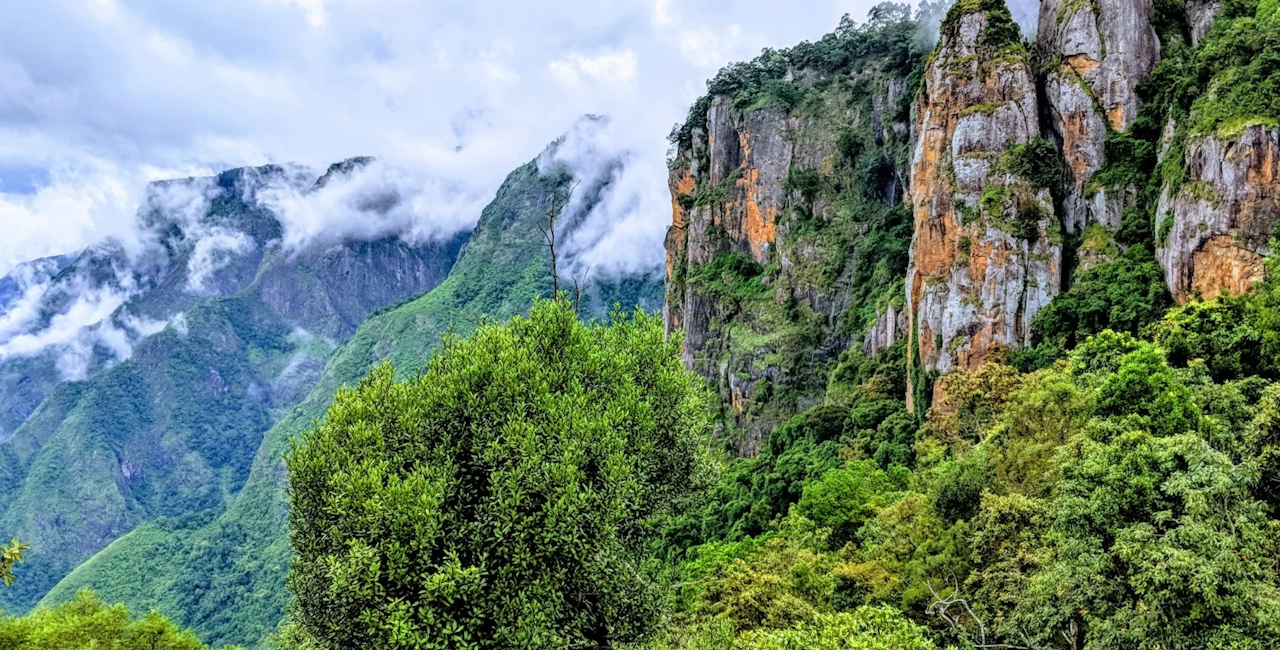Tucked away in the southern reaches of the Western Ghats, Kodaikanal is one of India’s most charming hill stations. Known as the “Princess of Hill Stations,” Kodaikanal is located in the Dindigul district of Tamil Nadu at an altitude of 2,133 meters above sea level. The name “Kodaikanal” translates to “the gift of the forest,” and this serene town lives up to that description with its dense forests, crystal-clear lakes, cascading waterfalls, and mist-covered hills. Kodaikanal has long been a favorite destination for honeymooners, nature lovers, and adventurers alike, offering a tranquil escape from the heat and hustle of the plains.
Natural Beauty
Kodaikanal is renowned for its cool climate and captivating natural beauty. The centerpiece of the town is the Kodaikanal Lake, a man-made star-shaped lake surrounded by lush greenery and hills. Visitors can enjoy a peaceful boat ride on the lake, rent bicycles to ride around its perimeter, or simply relax along its scenic banks. The lake’s calm waters reflect the surrounding trees and sky, creating a picture-perfect scene for photography enthusiasts.
One of Kodaikanal’s most iconic natural attractions is the Coaker’s Walk, a narrow pedestrian path that hugs the hillside and offers panoramic views of the plains and distant valleys. On a clear day, the view extends to neighboring villages and farmlands, and visitors are often greeted with the sight of mist rolling in and out of the hills, adding to the ethereal beauty of the place.
For those seeking adventure, Pillar Rocks is a must-visit. These three towering granite formations, each about 400 feet high, stand majestically amidst dense greenery. The rocks are shrouded in mist most of the time, adding to their mystique. Nearby, the Guna Caves are another natural wonder that draw thrill-seekers and explorers. These deep, dark caverns are steeped in mystery and local legend, making them an intriguing spot for those interested in Kodaikanal’s geological wonders.
Bryant Park, located near Kodaikanal Lake, is a well-maintained botanical garden that boasts an impressive variety of flowers, trees, and shrubs. It’s a great spot for a leisurely walk, and during the summer season, the annual flower show adds even more color to the park’s landscape.
Waterfalls and Treks
Kodaikanal is home to numerous waterfalls that add to its allure. One of the most popular is the Silver Cascade, a 180-foot waterfall located just outside the town on the road leading to Kodaikanal. The water from Kodaikanal Lake overflows to form this magnificent cascade, which is often a refreshing stop for travelers arriving in the town.
The Bear Shola Falls, nestled deep within a forested area, is another tranquil spot. Legend has it that bears once drank water from the falls, giving the place its name. Visitors can reach the falls after a short trek through the woods, where they are greeted by the soothing sound of water flowing over the rocks.
Trekking enthusiasts will find Kodaikanal a great base for various hikes and trails. The Dolphin’s Nose trek is one of the most popular, offering breathtaking views of the surrounding valleys. The path leads to a flat, protruding rock that resembles a dolphin’s nose, making it a popular vantage point for photographers and nature lovers alike.
Climate and Weather
Kodaikanal’s temperate climate makes it an ideal year-round destination. The town enjoys mild summers, with temperatures ranging from 20°C to 30°C, and cool winters, with temperatures dropping to as low as 8°C. The misty mornings and crisp air make it a refreshing escape from the hot plains of Tamil Nadu. The monsoon season (June to September) brings heavy rainfall, enhancing the beauty of Kodaikanal’s waterfalls and greenery, though it may make outdoor activities more challenging.
Colonial Legacy
Like many hill stations in India, Kodaikanal’s history is closely tied to British colonialism. The town was established in the mid-19th century as a retreat for British missionaries and officials seeking relief from the oppressive heat of the plains. Many of the colonial-era buildings, churches, and bungalows still stand, adding a touch of old-world charm to the town. The La Saleth Church, built in 1866, is one such structure that reflects the town’s colonial past. The Gothic architecture and tranquil setting make it a peaceful spot for visitors to explore.
Culture and Local Delights
Kodaikanal is a melting pot of cultures, with its population comprising a mix of Tamil, Kannada, and Malayalam-speaking communities. This diversity is reflected in the town’s festivals, food, and daily life. Visitors can sample traditional South Indian delicacies like idli, dosa, and rasam at local eateries, while shops offer handmade chocolates, spices, and eucalyptus oil—items for which Kodaikanal is famous.
The town is also home to several educational institutions and research centers, including the Kodaikanal International School and the Solar Physical Observatory, which conducts important research in the field of solar astronomy.
Conclusion
Kodaikanal’s natural beauty, pleasant climate, and rich cultural heritage make it one of India’s most beloved hill stations. Whether you’re looking to unwind in nature, explore scenic trails, or dive into the town’s colonial history, Kodaikanal offers a perfect blend of relaxation and adventure. Its misty hills, sparkling waterfalls, and serene lake create a peaceful retreat for travelers seeking an escape from the chaos of urban life. A visit to Kodaikanal is truly a “gift of the forest” that stays with you long after you leave.


0 Comment